Contents of this page
- Why Bother With a Real Camera as a Mom?
- Features to Understand Before You Buy a Camera
- What Do Parents Really Need from Their Camera?
- What’s the Best Type of Camera for Moms?
- Here Are the Best Cameras for Moms (And Dads Too)
- How Moms Can Save Money on Cameras
As a parent and aspiring photographer, you’ve probably found yourself wondering what is the best camera for moms and parents?
As a mom, you’re trying to preserve memories beautifully. Think video diaries, soft low-light portraits, and fleeting action moments.
You’re certainly not a professional photographer, but you’d sure like to understand what comes together in order to take an awesome photo of your kids.
It’s safe to say you’re somewhat nerdy for cameras, camera tech, and definitely have a burgeoning hobby in photography!
Oh, and the need to document their crazily short childhoods.

Of course, it’s understandable to feel overwhelmed and baffled by the sheer choice and number of options for owning a camera. Buying my first DSLR back in 2013 was huge for me, and I’ve bought a few cameras since.
The Camera Choice Overwhelm Is Real!
And while I can’t tell you the single best camera for you as a mom, I can tell you what the best types of camera are for parents (or grandparents) wishing to take better photos of their kids. We don’t need the flashiest of cameras, but we do need light-to-handle, easy-to-use cameras, with awesome autofocus and low light capabilities.
As a mum of four and avid photographer, I’m here to tell you there’s a simple path of camera ownership you can follow that lets you get beautiful photos of your kids while progressing your hobby and improving your photography as a mom or dad.
Perhaps you’re a mom who’s stepping up from an iPhone or Android smartphone. And like most moms, you’ve found that buying a new camera is not simple or easy. This is especially true if you have no allegiance to a particular brand of camera.
Here’s a question I hear a lot from parents without cameras:
Why Bother With a Real Camera as a Mom?
Why not just use your smartphone camera? After all, you have it with you all the time—which does make it invaluable. Besides, the quality of images that come from smartphone cameras are pretty darn good, and they’re getting better all the time.

But there are nine totally legitimate reasons to invest in a real camera:
1. Quality That Can’t Be Beat
A real camera’s larger sensor size means better quality photos. This is especially true in low light situations such as snapping while blowing out candles around a birthday cake, or cuddling up for a bedtime story. If you ever want to view images on a large screen or print your images, you will find that photos from a real camera have a quality that can’t be beat. Especially when you consider post-processing by software on phones that compresses images.
2. Reliable and Accurate Autofocus
Modern cameras excel at tracking moving subjects. This is perfect for capturing your busy little ones while they are at their most active, and ensuring their eyes are in focus thanks to eye autofocus.
3. Potentially Better Image Stabilization
Image stabilization reduces blur caused by camera shake. Thankfully for us parents (and everybody in general), image stabilization exists on both cameras and phones. But cameras win hands down here, thanks to their ability to better stabilise both video and photos with their optical action (read more about it here). Now, you can also get camera bodies that stabilise the sensor for dual stabilization. I include a couple of them in the list of cameras for moms I recommend.
4. True Creative Control
You don’t just work with presets, you have complete control over your camera. Want to freeze action while your toddler jumps in a puddle? You’ve got it! It’s so satisfying to have control over these settings.
5. Interchangeable Lenses
Cameras with interchangeable lenses let you pick the right tool to master the art. Pick a wide angle lens for expansive scenes and tight spaces like birthday parties. Choose a telephoto lens for high-quality zoomed in shots. Pick a 50mm lens for beautiful portraits with soft, creamy bokeh.
Tip for buying lenses: If you’re not sure what lens to buy, buy a camera body and kit lens package. Then you can experiment with focal length to decide on some prime (fixed focal length) lenses. Voila! You have everything you need as a mom to take awesome shots of your kids.
6. Beautiful Skin-Tone Reproduction
Canon and Nikon lenses are famed for beautifully reproducing skin tones for the best portraits of your children.
7. Depth and Background Blurring Control
A real camera lets you control aperture in “f stops”. You can take portraits where your kids stand out against beautifully blurred out backgrounds in a way that a smartphone can’t replicate.
8. Burst Mode
With the fast continuous shooting modes found on cameras (10–40 frames per second), you’ll be sure to capture that perfect expression among a burst of shots.
9. Indulging Your Hobby and Inspiring Future Photographers
You and your kids get to learn the process of photography together. Well, this point is probably way more important than number 1 in my opinion!
Before we move on, let’s take a moment to understand the features you need to know about before buying a new camera. Why? Knowledge is power! Apologies if you know these already!
7 Features to Understand Before You Buy a Camera
This is not an exhaustive list of camera features and settings. But here’s a quick recap on some of the features and settings of your new camera that are important to parents.
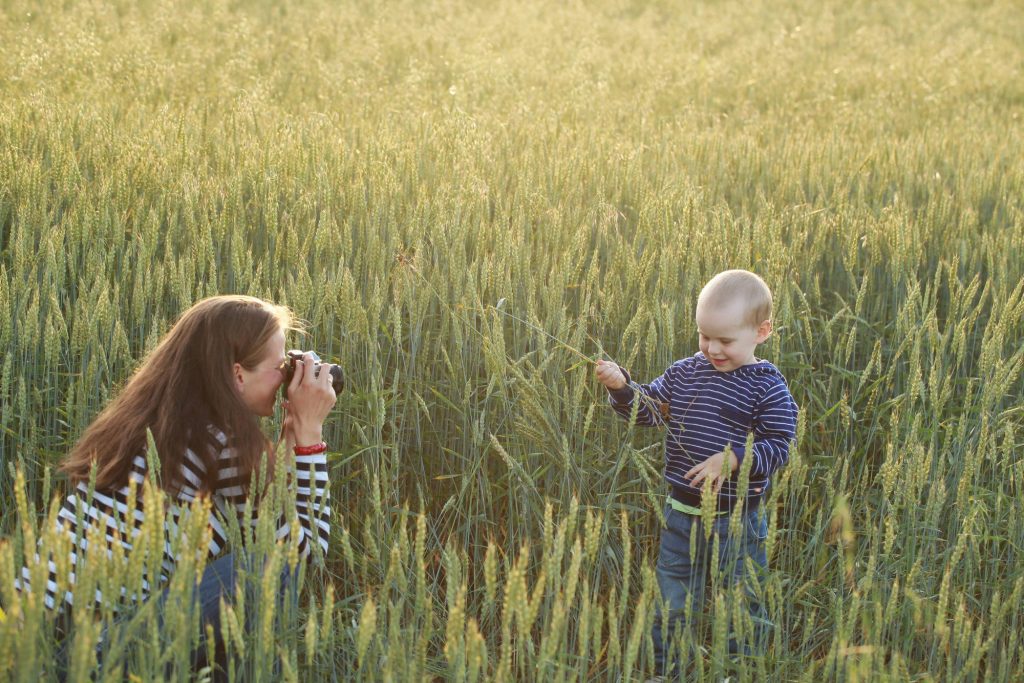
I’m going to compare these specifications against cameras for you further down the page, so read on!
1. Autofocus (AF)
Autofocus automatically locks focus onto your subject. It uses sensors and algorithms to detect contrast or phase differences in the image, ensuring your subject looks crisp without you needing to manually turn the focus ring. Most modern cameras also offer different autofocus modes—like single-point, continuous, or face/eye detection—so you can track moving subjects or focus precisely where you want.
2. Continuous Shooting Speed
This is a camera setting that allows you to capture a rapid series of photos by holding down the shutter button. It is measured in frames per second (fps), with higher numbers meaning more images can be captured in a short amount of time. This is useful for capturing fast action, like when your kids are playing sports, and helps ensure you get the perfect shot by having multiple photos to choose from.
3. Image Stabilization (IS, IBIS)
Image stabilization is a camera feature that reduces blur caused by small hand movements or camera shake, helping you capture sharper photos and smoother videos. IS applies to the lens only, or both the lens and body known as dual image stabilization or in-body image stabilization (IBIS).
4. ISO (Low Light Capabilities)
This camera setting controls the sensor’s sensitivity to light—higher ISO values brighten images in low light, but can introduce more noise or grain.
5. Video
The camera’s ability to record motion, including resolution, frame rate, and special features like slow motion or 4K recording.
6. Display
The quality and features of a camera’s screen, such as its size, resolution, touch sensitivity, and whether or not it can tilt or swivel for easier viewing.
7. Megapixels (MP)
Megapixels measure the resolution of a camera’s sensor—the number of tiny dots (millions of pixels) that make up an image, affecting how much detail it can capture. Remember that sensor size, lens quality, and other factors are also important. In my recommendations, you’ll find cameras with 20-32 megapixels.
Now that we know the “why”, let’s look at some aspects of camera ownership that are particularly relevant to moms and parents—the “what”.
What Do Parents Really Need from Their Camera?
When choosing a new camera, it always helps to think about what you want from your camera and your hobby as a photographer.

For me, it looks like this:
- Easy to use ergonomics—because you’re struggling to manage your kids with one hand while shooting with the other.
- Intuitive menu—nobody has time for getting lost in menu settings while missing the moment.
- Light in weight—as a parent, you’ve got enough heavy stuff to carry as it is.
- Fast and accurate autofocus with great eye autofocus—your pictures are primarily of little people and their beautiful eyes. But wow, they move fast!
- Quality above and beyond smartphone quality—because you have a solid interest in the art of photography and taking better family photos.
- Interchangeable lenses—why? Well, they’re so much fun and you get to capture your darlings in all kinds of different and creative ways.
- Image stabilization—this could look like optical stabilization in the lens, or dual image stabilization that includes lens and camera-body image stabilization. A little tech to help you take less blurry shots.
- Good low light capabilities—better photos in tender low-light moments.
- Shoot a decent video—sometimes capturing movement is what you want.
- Built-In Wi-Fi—transfer photos and videos without cables.
Can you add any to this list?
What’s the Best Type of Camera for Moms?
Remember I said there isn’t a “best camera for moms”? Well, I do believe there is a “best type of camera for moms”. This is what I think:
Mom Hack #1: A Smaller Sensor Size Means Easier-to-Handle Cameras
In my opinion, the best types of camera for moms have a slightly smaller sensor than pro-level cameras, but they are still powerful enough, and their sensor lets in way more light than your smartphone’s sensor.
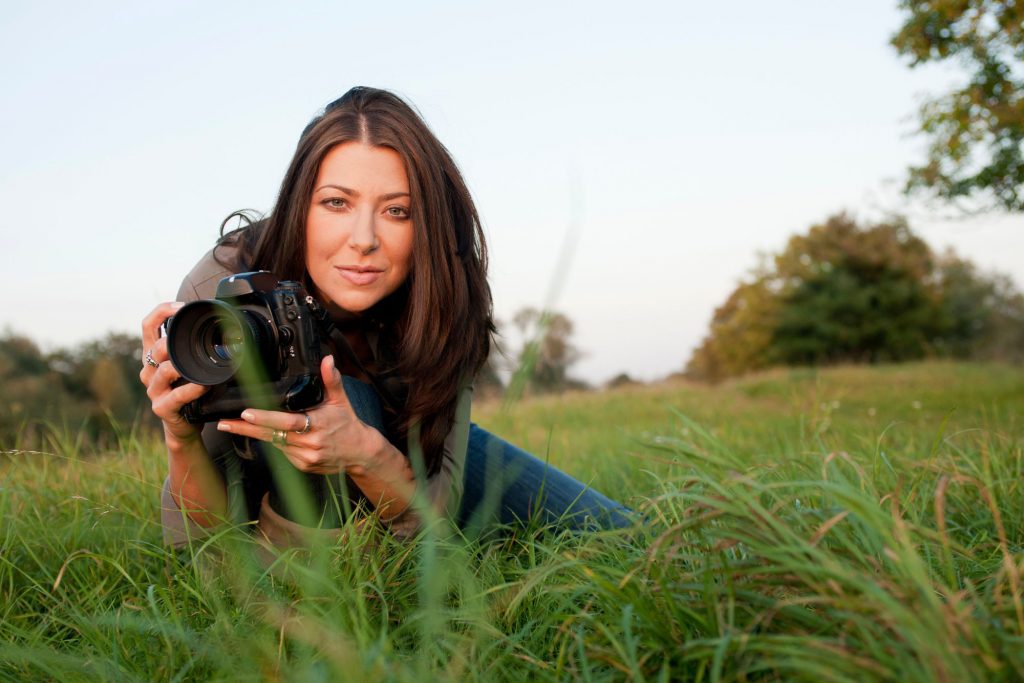
Sensor size refers to the physical dimensions of the light-sensitive chip inside a camera that captures an image—larger sensors generally produce better image quality, especially in low light.
In this article, we’re looking at “APS-C” cameras, which have a larger sensor size than your phone, but smaller than “full frame” pro-level cameras. The cameras and lenses themselves are generally smaller, lighter, and easier to handle—great when you’re a mom and have kids!
APS-C cameras are generally a better choice for action shots, street, and wildlife photography. They allow for better freedom of movement than full-frame cameras when you’re running around after your dumplings.
The bottom line: Not only do APS-C cameras capture photos of high quality, they have some real advantages over full frame for taking photographs of your children. Parent photographers love them because they’re lighter and more discreet. And thanks to the APS-C crop factor, there is a degree of closeness from a distance by default (more about crop factor here, if you’re interested). APS-C cameras won’t weigh you down and they help you capture action and atmosphere, rather than just posed portraits.
Mom Hack #2: Mirrorless Cameras Are Lighter
The best camera for moms is also mirrorless. Why? In general, mirrorless cameras are smaller and lighter than DSLRs, without sacrificing the quality you need when you’re stepping up from a smartphone camera. They’re the perfect starting point for parents and anybody at the beginning of their photography journey. The prices range from £560 to £1500 when bought new from the manufacturer.

What about DSLRs? DSLRs tend to be heavier and larger than mirrorless cameras. Also, large camera manufacturers have officially said they are no longer developing new DSLR models. Mirrorless is the future.
What about point and shoot cameras? If you’re not ready for interchangeable lenses yet, you could choose a compact camera. However, if you love photography and want it for a hobby, I would skip point and shoot cameras completely.
Now, let’s get down to the nitty gritty!
Here Are the Best Cameras for Moms (And Dads Too)
Here are my top picks for cameras for moms who have little experience with a camera, who are upgrading from a smartphone camera, and have a budget of £1,500/$2,000. We’ll look at the cameras in more detail down the page:
Canon Cameras Best for Moms
- Canon EOS R50 (£749.99, $729.99) — Best “first mirrorless” for parents
- Canon EOS R10 (£999.00, $999.00) — Best for speed and value
- Canon EOS R7 (£1449.00, $1,449.00) — Best sturdy all-round action shooter
| Canon R50 | Canon R10 | Canon R7 |
|---|---|---|
| Approx. £/$750 | Approx. £/$1,000 | Approx. £/$1,449 |
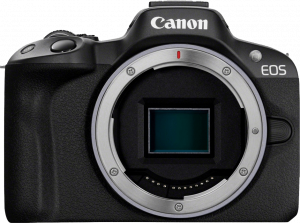 | 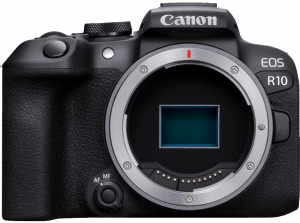 |  |
| Best “first mirrorless” for parents | Best for speed & value | Best sturdy all-round action shooter |
| Speed: 15fps Weight: 376g | Speed: 23fps Weight: 429g | Speed: 30fps Weight: 612g In-body image stabilization No flash |
Nikon Cameras Best for Moms
- Nikon Z30 (£649.00, $709.95) — Best for speedy autofocus and lightweightness
- Nikon Z fc (£849.00, $959.95) — Best for style and making family memories
- Nikon Z50 II (£799.00, $1,009.95) — Best APS-C camera from Nikon?
| Nikon Z30 | Nikon Z fc | Nikon Z50II |
|---|---|---|
| Approx. £/$700 | Approx. £/$850 | Approx. £/$1,000 |
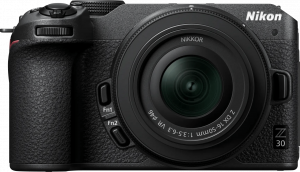 | 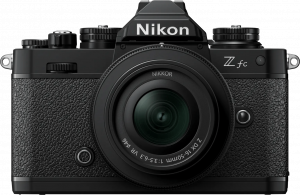 |  |
| Best for fast autofocus & light weight | Best for style & making family memories | Best APS-C camera from Nikon? |
| Speed: 11fps Weight: 405g | Speed: 11fps Weight: 445g | Speed: 30fps Weight: 550g |
Sony Cameras Best for Moms
- Sony α6700 (£1,399.00, $1,599.99) — Best compact performance
| Sony α6700 | ||
|---|---|---|
| Approx. £/$1,400 | ||
 | ||
| Best compact performance | ||
| Speed: 11fps Weight: 493g |
➡️ Now read on to learn everything relevant to parents about these cameras. We’ll compare them all in more detail so that you can make the most informed camera choice!
Canon APS-C Mirrorless Cameras for Moms
Why Canon?
For moms upgrading from their smartphone, Canon is a really wise choice. The menus and button layouts make understanding settings so much easier. The guided menu system and automatic scene detection help parents get great shots without fiddling with complicated settings. When you’re ready to learn more about advanced features, they’re all there.
- As a market leader, Canon’s autofocus systems are highly praised
- Accurate and well managed colours
- Easy to use and predictable menus
- Good camera ergonomics
- Well-regarded after sales support
I’m going to show you 3 of Canon’s cameras that make learning photography easy. We’ll compare the Canon EOS R50, Canon EOS R10, and the Canon EOS R7. Your choice depends on your budget, the features you want, and the future of your photography hobby.
What about the Canon EOS R100?
The Canon EOS R100 is an entry level mirrorless camera with an interchangeable lens system. I think of it as the equivalent to the Canon Rebel T series like the T7. It’s a great lightweight camera for beginners, and has a similar sensor size to the R50. Unfortunately, unless you’re a new parent taking newborn shots, its continuous shooting speed is too low at 3.5fps to consider it for taking burst shots of fast moving kids.
3 x RECOMMENDED CANON APS-C CAMERAS FOR PARENTS
Canon EOS R50—£749.00, $729.99

First up, is the Canon EOS R50. The R50 is a compact, light, and fast-focusing camera that’s perfect for moms, parents, and beginning photographers. The image quality easily matches that of its more expensive alternatives. You’ll love how easy it is to use.
What Canon Says:
“A great portable camera, the EOS R50’s deep learning Dual Pixel CMOS AF II automatically recognises, focuses on and tracks your moving subject, so you never miss a shot.”
What Pro-Level Reviewers Say:
👍 EOS R50 PROS: A lightweight camera with great autofocus, especially at this price. You’ll get superb quality photos and excellent video for its class. Overall, the Canon EOS R50 is a well-featured camera for its cost.
NEGATIVES: The Canon EOS R50 does not feature in body image stabilization. Some reviewers have recommended checking the ergonomics since those with big hands found it easy to unintentionally knock the buttons. Pro-level reviewers criticise the lack of native lens choice—that is, especially for RF-S mount. However, new lenses are added all the time, and for beginners just starting out, this shouldn’t be a problem.
Camera Capabilities:
- Sensor size: 24.2 megapixel APS-C sensor
- Autofocus: Dual Pixel CMOS AF II
- Continuous shooting speed: 15 fps
- Image stabilization: Lens only
- Lens mount: RF-S, RF
- ISO: 32,000
- Video: 4K UHD 30p
- Display: 3” vari-angle touchscreen
- Weight: 376g with card and battery
- Price: £749.99, $729.99
Canon EOS R10—£999.00, $999.00

My next choice, if you’re looking to step up a gear, is the Canon EOS R10. The Canon R10 improves on the already awesome R50 with its faster continuous shooting speed, and improved video quality. It weighs slightly more, and of course, comes with a higher price tag. But it features more physical controls to help you focus and switch settings once you’re familiar with your camera and shooting style.
What Canon Says:
“A great hybrid camera for your next creative steps. Great for adventure photography and travel. Choose between super-quality 4K/30p video or fluid 4K/60p for smooth motion. For hybrid shooting with photos or video, deep-learning Dual Pixel CMOS AF II focusing keeps everything sharp. Low light is no problem thanks to ISO 32,000 sensitivity.”
What Pro-Level Reviewers Say:
👍 EOS R10 PROS: A good enthusiast upgrade with excellent photo and video capability for its size and price. Impressive autofocus and subject-tracking capabilities for its class. AF tracking in photo mode is significantly better than Nikon or Fujifilm. Strong continuous shooting ability, which is rare in this price. Compact and lightweight body with decent ergonomics for carrying it around while out and about with your kids.
NEGATIVES: Does not have in body image stabilization. As with the Canon R50, native lens choices may be limited.
Camera Capabilities:
- Sensor size: 24.2 megapixel APS-C sensor
- Autofocus: Dual Pixel CMOS AF II
- Continuous shooting speed: 15 fps – 23 fps with electric shutter
- Image stabilization: Lens only
- Lens mount: RF-S, RF
- ISO: 32,000
- Video: 4K/30p and 4K/60p
- Display: 3” vari-angle touchscreen
- Weight: 429g with card and battery
- Price: £999.99, $999.00
Canon EOS R7—£1449.00, $1,449.00

Now for our final and most expensive Canon camera—The Canon EOS R7. There are some key upgrades that the R7 holds over the R50 and R10. The first of these is that it features a larger resolution sensor than both the R50 and R10.
Secondly, it can shoot faster—up to 30 fps electronically and has a stronger buffer before the camera slows down than the R50 and R10.
Importantly, it improves on both through dual image stabilization, happening in the body as well as the lens.
On the downside, it is heavier than the R50 and the R10. Surprisingly, it’s also heavier than the entry-level full frame R8. It also has no built-in flash—personally I don’t find this a problem, as I’ve only had poor results from built-in flash. But many people do like having a flash.
Finally, the camera itself is more robust and perhaps has better weather resilience, which is great if you’re an outdoors kind of family.
This is my choice if you want a bit more from your camera, and especially if you’re an active family who go outdoors a lot. Consider it if you want to take advantage of the advanced features of the R7.
What Canon Says:
“An advanced camera for enthusiast photographers who want to up their creative game. Its APS-C sensor delivers increased reach, getting you closer to far-off subjects. As a hybrid camera, the EOS R7 offers superb-quality 4K/30p video and a silky-smooth 4K/60p mode. An In-Body Image Stabilizer works with a lens’s optical IS, for smooth video and faster shutter speeds. Our deep-learning Dual Pixel CMOS AF II tracks subjects, keeping them sharp.”
What Pro-Level Reviewers Say:
👍 CANON EOS R7 PROS: Good subject detection and tracking capabilities (humans, animals, vehicles) which are touted as strong and reliable in many real-world shooting situations. Fast continuous shooting is praised. Reviewers approve of the in body image stabilization which is a big plus for handheld shooting.
NEGATIVES: As with the other Canon APS-C cameras, RF and RF-S lens choice is not as comprehensive. Some pro-users report that although the burst mode is fast, the buffer can take some time to write when you’ve taken lots of shots.
Camera Capabilities:
- Sensor size: 32.5 megapixel APS-C sensor
- Autofocus: Dual Pixel CMOS AF II
- Continuous shooting speed: 15 fps – 23/30 fps
- Image stabilization: Dual lens and body
- Lens mount: RF-S, RF
- ISO: 32,000
- Video: 4K/30p and 4K/60p
- Display: 3” vari-angle touchscreen
- Weight: 612g with card and battery
- Price: £1,449.99, $1,449.00
Canon APS-C Lens Options
Are you wondering what lenses will work best for these cameras? Canon’s RF-S lenses are specifically for Canon APS-C mirrorless cameras. You can use Canon’s RF lenses on their APS-C cameras, since the mount is the same. However, the results will differ due to crop factor.
Top Canon Lens Picks:
- Canon RF-S 18–45mm kit lens for everyday use
- Canon RF 50mm f/1.8 for dreamy portraits
Third party lenses for Canon mirrorless cameras are somewhat limited. But as of 2025, Sigma, Tamron, Viltrox, and Samyang have announced autofocus RF-mount lenses, mainly in standard zoom and prime focal lengths.
Nikon APS-C Mirrorless Cameras for Moms
Moms choose Nikon cameras when they want a dependable market leader with a reputation for reliability and comfort.
Why Nikon?
- As a market leader, the image quality is superb
- Sturdy and dependable build quality
- Autofocus is good, but in my opinion not as good as Canon—especially for tracking eyes
- Excellent colour science
In this section, we’ll compare the Nikon Z30, Nikon Z fc, and the Nikon Z50 II. Your choice depends on your budget, the features you want, and the future of your photography hobby.
3 x RECOMMENDED NIKON APS-C CAMERAS FOR PARENTS
Nikon Z30—£649.00, $709.95

Let’s look at our first camera from Nikon. What makes the Nikon Z30 a great choice for moms is its light weight, how easy it is to carry and use, and its excellent image and video quality. It’s also primed for selfies—so if you love selfies with your kids, this might be the camera for you.
What Nikon Says:
“Tricky lighting or fast action. Video or photos, the Z30 is packed with advanced automatic functions that make it easy for you. The camera gathers so much more light than a smartphone. The deep grip allows stable handheld shooting, even at arm’s length. If you turn the vari-angle monitor to face forwards, the camera instantly activates self-portrait mode.”
What Pro-Level Reviewers Say:
👍NIKON Z30 PROS: The compact size and handling on this camera are what sets it apart for reviewers. The camera is praised for its excellent autofocus performance and good image quality for its class.
NEGATIVES: As with most cameras at this price point, there is no in-body image stabilization. Reviewers also note a lack of native APS-C lenses, however this shouldn’t be a problem for non-professional users.
Camera Capabilities:
- Sensor size: 20.9 megapixel APS-C sensor
- Autofocus: Hybrid AF system combining phase-detection and contrast-detection. Use eye-detection AF to lock onto eyes.
- Continuous shooting speed: 11 fps
- Image stabilization: Lens only
- Lens mount: Z-mount
- ISO: 102,400
- Video: 4K UHD at up to 30p
- Display: 3” vari-angle monitor
- Weight: 405g with card and battery
- Price: £649.00, $709.95
Nikon Z fc—£849.00, $959.95

Feast your eyes on this retro beauty—the Nikon Z fc. This retro styled camera is small, lightweight, and gives strong face/eye-AF and subject tracking—great for photographing moving kids. The camera looks fun and less imposing than your traditionally styled black camera, so it may be helpful when photographing children in more casual or playful settings.
What Nikon Says:
“Classic Nikon camera design meets innovative Z series technology for superb image quality and pure, unadulterated style. Wherever you shoot, whatever you shoot—from stills to movies to vlogs. Propel your creativity into the future with the lightweight DX-format mirrorless camera that puts iconic in your hands.”
What Pro-Level Reviewers Say:
👍NIKON Z fc PROS: Praised for its image quality. Owners rate the autofocus as good, and they appreciate the camera’s portability and how much fun it is to use.
NEGATIVES: It can be hard to grip the camera, and it can seem a little plasticky in the hand. It does lack in body image stabilization, but so do many cameras at this price. As with the Canon APS-C cameras, a lack of APS-C Z-mount lenses is a common niggle for some users. Finally, the autofocus might not be so great in low light, and some users reported the experience of focus hunting. You can’t really go wrong with this price, though.
Camera Capabilities:
- Sensor size: 20.9 megapixel APS-C sensor
- Autofocus: Hybrid AF system combining phase-detection and contrast-detection. Use eye-detection AF to lock onto eyes.
- Continuous shooting speed: 11 fps
- Image stabilization: Lens only
- Lens mount: Z-mount
- ISO: 51,200
- Video: 4K UHD at up to 30p
- Display: 3” vari-angle monitor
- Weight: 445g with card and battery
- Price: £849.00, $959.95
Nikon Z50 II—£799.00, $1,009.95

My final Nikon choice—the Nikon Z50 II—makes a great option for moms looking for a camera. It’s praised for its superb image quality which rivals imagery captured on full frame cameras. The camera features an advanced autofocus system and subject detection to help you get sharp shots of your moving kids. The ergonomics are well suited to moms on the go.
What Nikon Says:
“Light, powerful, the ultimate entry level camera. Advanced autofocus makes shooting effortless. The Z50 II mirrorless camera can automatically recognise nine subject types, even from a distance. With 3D tracking, it couldn’t be easier to follow unpredictable, fast-moving subjects. Focus is on-point, even if your subject is extremely small in the frame.”
What Pro-Level Reviewers Say:
👍NIKON Z50 II PROS: Ken Rockwell thinks this is Nikon’s best camera. However, he would only buy it if he were already committed to Nikon, since he prefers the Canon APS-C lineup (R50, R10, R7), and I have to agree. Other pro-level reviewers love the value for money this camera brings for the quality of the images it produces. The camera is said to be easy to carry around without becoming a burden, and the ergonomics are excellent. Finally, the reliable autofocus and subject detection on the Nikon Z50 II are repeatedly praised.
NEGATIVES: Like many cameras in this class, the Nikon Z50 II has no in-body image stabilization. The battery life is sometimes criticised for being shorter than expected. Reviewers note that although the camera’s autofocus and burst/action shooting performance are good, they’re not top tier for very fast or erratic subjects (e.g., kids in full flight or sports). Finally, like with Canon, lens choice may be limited on the Z-mount.
Camera Capabilities:
- Sensor size: 20.9 megapixel APS-C sensor
- Autofocus: Hybrid AF system combining phase-detection and contrast-detection. Use eye-detection AF to lock onto eyes.
- Continuous shooting speed: 30 fps
- Image stabilization: Lens only
- Lens mount: Z-mount
- ISO: 51,200
- Video: 4K UHD at up to 30p
- Display: 3” vari-angle monitor
- Weight: 550g with card and battery
- Price: £799.00, $1,009.95
Nikon APS-C Lens Options
Nikon’s Z-mount lenses are specifically for Nikon’s Z line of mirrorless cameras. Z (DX) lenses are native to APS-C size cameras. Z (FX) lenses are full-frame lenses for full-frame cameras.
Top Nikon Lens Picks:
- Nikon Z DX 16–50mm VR kit lens
- Z 40mm f/2 for portraits
You can use Nikon’s full-frame (FX) lenses on their APS-C (DX) mirrorless cameras without an adapter, because they all share the same Nikon Z mount, however be aware of the crop factor.
Sigma, Tamron, and Viltrox all offer third party lenses for Nikon APS-C mirrorless cameras.
Sony APS-C Mirrorless Cameras for Moms
Why Sony?
- Sony is a market leader in mirrorless cameras.
- The brand had a head start over Canon and Nikon with mirrorless cameras, so they’ve had plenty of time to refine their autofocus and tracking technology.
1 x RECOMMENDED SONY APS-C CAMERA FOR MOMS
Sony α6700—£1,399.00, $1,599.99

With the Alpha 6700, you’ll find class-leading subject tracking, crisp 4K video, and in-body image stabilization—a great choice for moms and parents.
What Sony Says:
“The α6700 combines the latest AI technology with Sony’s outstanding α-series image quality in a compact APS-C camera body. Offering enhanced subject recognition, the latest technology for capturing stills and movies, and E-mount lens compatibility, the lightweight α6700 is designed for creative adventures, anytime, anywhere.”
What Pro-Level Reviewers Say:
👍SONY α6700 PROS: Reviewers highlight the AI-powered subject detection and tracking for people as a major strength. Many reviewers say the image quality is very good for an APS-C camera: it features good detail and dynamic range. The video capabilities are also superb. Reviewers also note that the grip, hand‐feel, and usability of the Sony Alpha 6700 are better compared to earlier models in the Sony APS-C line.
NEGATIVES: Ken Rockwell doesn’t fully recommend Sony cameras due to ergonomics, fiddly menus and less than faithful colour reproduction, which aren’t as good as Canon and Nikon. Indeed, another complaint of users is that the camera does require some setting up of menus before it can be used. Additionally, the viewfinder and some physical controls are not as refined as some higher tier cameras.
Camera Capabilities:
- Sensor size: 26 megapixel APS-C sensor
- Autofocus: Great autofocus with lots of AF points, excellent subject detection/tracking
- Continuous shooting speed: 11 fps
- Image stabilization: Dual lens and body
- Lens mount: E-mount
- ISO: 32,000/102,400 in extended mode
- Video: 4K/30p, 4K/60p, 4K/120p
- Display: 3” vari-angle monitor
- Weight: 493g with card and battery
- Price: £1,399.00, $1,599.99
Sony APS-C Lens Options
Sony mirrorless cameras use the versatile E-mount system, which supports both APS-C and full-frame lenses (known as FE-mount).
Top Sony Lens Picks:
- Sony E PZ 16–50mm kit lens
- Sigma 18–50mm f/2.8 (E-mount)
- Sony FE 50mm f/1.8
Since Sony welcomes third party lens options, you’ll find offerings from Sigma, Tamron, Samyang, and Viltrox. This means it could be cheaper to find lens alternatives and allows for more creative options.
How Moms Can Save Money on Cameras
Before you dash out to buy a new camera, here are some quick ways you can save money on buying camera gear.
Tips When Buying a Brand New Camera
When you buy new from Canon UK, you get about 2 years warranty, that’s 1 year with Canon USA. With Nikon and Sony in the UK and USA, it’s 1 year.
- Wait for sales like Black Friday, where large discounts are offered.
- Search for vouchers.
- Use shopping websites like Hot UK deals and KidStart to get cash back.
Consider Buying Refurbished
Consider buying refurbished cameras from a trusted specialist. Many let you upgrade your current gear so you always have the camera you want. In the UK, try these stores:
- MPB: A large specialist marketplace for used/second-hand camera equipment. The website helpfully lists the condition of equipment and includes a 6 months warranty on used kit in the UK.
- Harrison Cameras: Offers a large selection of used mirrorless cameras, many with a 12 month guarantee.
- Camera World: Stocks new, used, and ex demo models at reduced prices with and without lenses. Great advice, too!
In the USA:
- Canon USA: Offer refurbished Canon cameras and accessories directly from the manufacturer.
- Adorama: A long-standing US retailer with a strong used inventory.
- KEH Camera: A store with a very good reputation. Well-stocked used-gear catalogue with strict grading to ensure quality.
It pays to look around once you’ve decided on the right camera for you, whatever brand it might be.
Final Thoughts on the Best Camera for Moms
Despite the baffling number of camera choices out there, I hope that I’ve helped you to find the best camera, mom. If you have any questions at all, please get in touch via my Facebook page.
Until next time!
Helen

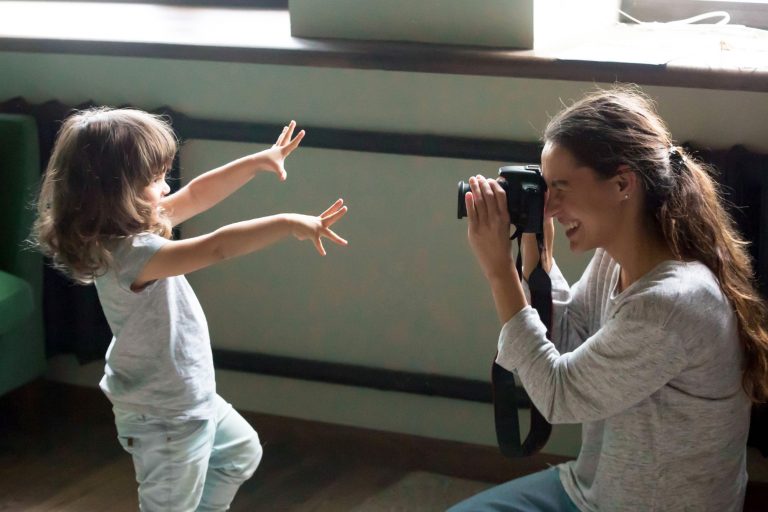



Comments are closed.